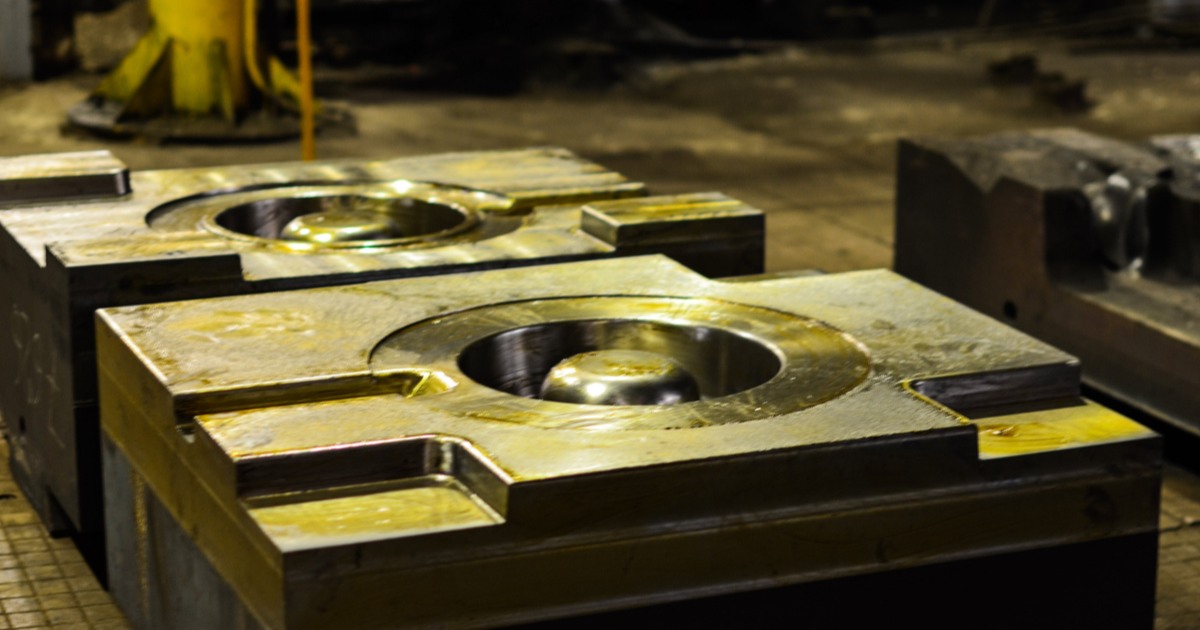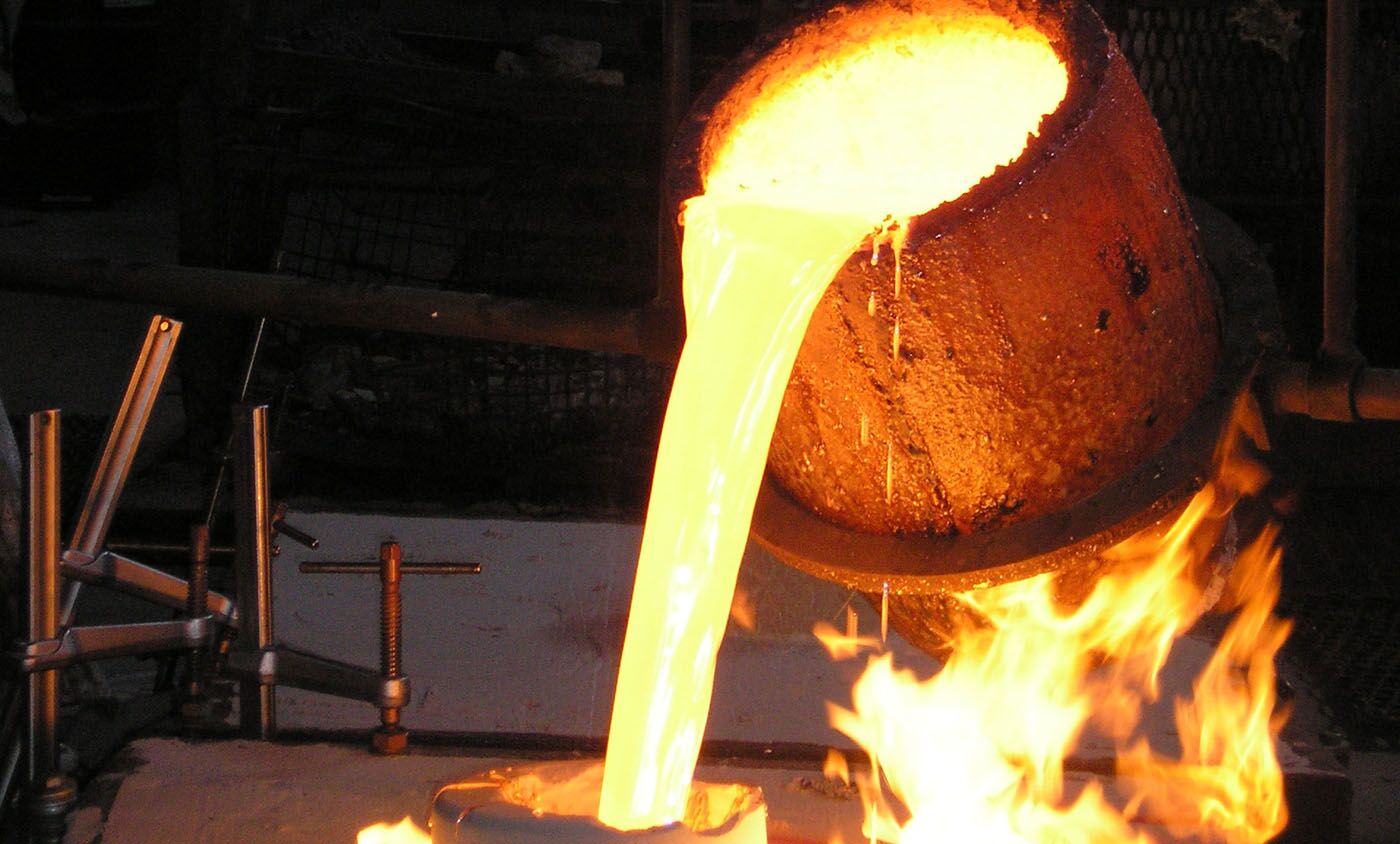Why a Casting Foundry remains necessary in today’s metal industry
Wiki Article
Checking Out the Crucial Applications and Use Light Weight Aluminum Shop in Modern Production
Light weight aluminum factories play a crucial function in contemporary manufacturing, serving varied markets with their one-of-a-kind residential or commercial properties. From automobile parts that enhance fuel effectiveness to aerospace structures that focus on weight, light weight aluminum's adaptability is obvious. Its applications encompass construction and customer electronic devices, highlighting its durability and energy efficiency. However, the developments in aluminum casting techniques and future trends require a closer evaluation, as they may redefine its influence on manufacturing.The Duty of Light Weight Aluminum Foundries in Automotive Production
As the automobile sector significantly focuses on lightweight materials to boost gas effectiveness and performance, light weight aluminum factories have come to be necessary contributors to manufacturing procedures. These factories focus on generating elements that meet the stringent needs of contemporary vehicles, such as engine blocks, transmission real estates, and architectural components. Light weight aluminum's beneficial homes-- such as high strength-to-weight ratio, deterioration resistance, and exceptional thermal conductivity-- make it an ideal selection for vehicle applications.Moreover, light weight aluminum foundries make use of advanced casting strategies, including die spreading and sand spreading, to produce sturdy and intricate parts. This capacity permits producers to enhance designs for efficiency while decreasing weight. Using aluminum additionally sustains sustainability objectives, as it is highly recyclable and decreases energy usage in lorries. By facilitating the combination of light weight aluminum into vehicle layout, foundries play an essential function in forming the future of the auto industry, promoting effectiveness and advancement throughout the board.
Aerospace Applications: Lightweight Solutions for Flight
Light weight aluminum factories play a considerable function in the aerospace market, where the demand for light-weight products is extremely important for boosting fuel effectiveness and efficiency in aircraft. The unique residential or commercial properties of light weight aluminum, including its high strength-to-weight proportion and deterioration resistance, make it an ideal choice for numerous aerospace components. These elements consist of architectural components, engine casings, and touchdown gear, which add to general aircraft efficiency.The usage of aluminum alloys, especially those established through advanced casting techniques, permits for the production of elaborate styles and complicated forms while decreasing weight. Furthermore, aluminum's recyclability aligns with the aerospace sector's sustainability objectives, minimizing environmental effect. With constant developments in aluminum shop innovations, producers can optimize manufacturing procedures, resulting in boosted performance and decreased costs. As the aerospace industry progressively focuses on innovations that improve efficiency, aluminum shops will certainly remain integral to creating lightweight remedies for contemporary flight.
Structure and Construction: Enhancing Architectural Integrity
In the building and construction industry, a significant emphasis is put on enhancing architectural integrity through using aluminum. Understood for its high strength-to-weight proportion, aluminum supplies sturdiness without endangering on weight, which is vital in modern building styles. Its resistance to rust better ensures longevity, making it an excellent product for various architectural parts, including beams, frameworks, and cladding.Light weight aluminum also promotes innovative style opportunities, permitting designers and architects to produce cosmetically pleasing frameworks while maintaining safety requirements. The product's convenience enables its application in both business and property projects, from high-rise buildings to bridges. In addition, advancements in light weight aluminum foundry strategies have boosted the precision of light weight aluminum parts, guaranteeing they satisfy rigid building regulations. On the whole, the assimilation of aluminum in construction not just enhances structural honesty yet likewise adds to lasting building practices, provided its recyclability and energy-efficient production techniques.
Customer Electronics: The Rise of Light Weight Aluminum in Modern technology
In the domain of consumer electronics, light weight aluminum has actually obtained prestige because of its light-weight layout benefits and remarkable thermal conductivity. This change not only improves product mobility yet likewise improves device efficiency by successfully dissipating warm. As technology continues to advance, the function of aluminum in creating smooth and efficient tools is significantly considerable.Lightweight Style Advantages
As customer electronics evolve, the demand for light-weight yet long lasting materials has actually surged, making aluminum an increasingly popular selection amongst manufacturers. Its low thickness permits the creation of streamlined tools that are very easy to use and bring, significantly enhancing mobility. The strength-to-weight ratio of light weight aluminum assurances that products can stand up to daily damage without endangering efficiency. Additionally, the pliability of light weight aluminum allows producers to make intricate shapes and kinds, even more adding to innovative visual appeals and functionality. This light-weight quality also plays a crucial function in power efficiency, as lighter gadgets require less power to operate. Therefore, aluminum not just satisfies the developing aesthetic demands but additionally straightens with the modern concentrate on sustainability in consumer electronics.Thermal Conductivity Conveniences
Thermal conductivity is an important factor in the performance of consumer electronics, and light weight aluminum excels in this domain. Its high thermal conductivity enables reliable heat dissipation, which is vital for keeping optimal operating temperature levels in tools such as smartphones, laptops, and gaming consoles. By helping with fast heat transfer away from sensitive elements, aluminum assists stop getting too hot, thereby improving performance and extending device durability. Additionally, the lightweight nature of aluminum complements its thermal buildings, making it a perfect option for portable innovation. As manufacturers increasingly prioritize performance and power performance, light weight aluminum's duty in thermal monitoring comes to be much more substantial, bring about its growing fostering in contemporary electronic designs. This fad emphasizes aluminum's importance in customer electronics development.Marine Industry: Corrosion Resistance in Harsh Settings
Deterioration resistance is an important consider the aquatic market, where equipment and frameworks are routinely revealed to extreme saltwater environments. Light weight aluminum, specifically in its alloy types, supplies substantial advantages hereof. Its all-natural oxide layer offers a protective obstacle that prevents deterioration, making it optimal for vessels, anchors, and various other aquatic applications.Marine-grade aluminum alloys, such as 5083 and 6061, are especially developed to hold up against the destructive results of saltwater and climatic problems. These alloys not just stand up to corrosion however also preserve architectural integrity and stamina over time. Applications range from hulls and superstructures of ships to elements in offshore systems.
The lightweight nature of aluminum more enhances its suitability, making it possible for improved gas effectiveness and ease of handling - aluminum foundry. As the marine industry remains to concentrate on toughness and efficiency, light weight aluminum stays an essential product option for standing up to corrosion popular marine setups
Technologies in Light Weight Aluminum Casting Techniques
While conventional aluminum spreading approaches have actually offered the sector well, recent innovations are transforming the landscape of aluminum production. Techniques such as 3D printing of cores and mold and mildews are gaining traction, permitting quick prototyping and reduced lead times. This improvement makes it possible for producers to develop complex geometries that were previously hard to achieve with conventional spreading techniques. Furthermore, improvements in die-casting modern technology, including using high-pressure die-casting (HPDC), have improved the accuracy and surface finish of cast light weight aluminum parts, bring about boosted efficiency in various applications.The adoption of financial investment casting has allowed for better style flexibility and lowered product waste. Technologies in alloy compositions are also considerable, as they improve mechanical residential properties and deterioration resistance. Generally, these growths not just enhance production processes yet additionally add to more lasting methods within the aluminum foundry sector, making it versatile to the advancing demands of modern-day production
Future Fads in Light Weight Aluminum Factory Manufacturing
The future of aluminum shop production is positioned for significant improvement via automation, enhancing effectiveness and precision in manufacturing procedures. Lasting practices are progressively coming to be a priority, as shops look for to reduce their ecological influence while satisfying expanding regulatory needs. Furthermore, innovations in alloy development will certainly make it possible for the creation of stronger, lighter materials tailored for diverse applications, driving advancement in the sector.
Automation in Shop Processes

Sustainable Manufacturing Practices
An expanding focus on lasting manufacturing techniques is reshaping the future of aluminum foundry manufacturing. Market leaders are significantly embracing energy-efficient modern technologies and reusing efforts to minimize waste and reduce carbon footprints. Using recycled light weight aluminum substantially decreases power consumption contrasted to primary light weight aluminum production, making it a recommended choice for eco mindful suppliers. On top of that, cutting-edge casting strategies are being established to boost material efficiency and decrease discharges. Business are likewise purchasing eco-friendly power resources, such as solar and wind, to power their procedures sustainably. Aluminum Casting. By incorporating these techniques, the aluminum factory sector not only fulfills regulative requirements however also replies to consumer need for greener products, inevitably leading the way for an extra sustainable production landscapeAdvanced Alloy Advancement
Advancements in light weight aluminum alloy development are readied to play a considerable role in the future of shop production, particularly as sustainability and performance needs escalate. The market is increasingly concentrating on creating high-strength, light-weight alloys that can stand up to extreme problems while minimizing environmental impact. Researchers are checking out cutting-edge compositions, such as aluminum-lithium and aluminum-scandium alloys, which guarantee boosted mechanical residential properties and reduced weight. Furthermore, the assimilation of sophisticated manufacturing methods, including additive manufacturing and precision casting, permits even more facility geometries and decreased material waste. As governing pressures and consumer preferences shift towards greener alternatives, the development of recyclable and energy-efficient alloys will be crucial. The future landscape of light weight aluminum foundry manufacturing hinges on these improvements in alloy technology.
Regularly Asked Inquiries
What Are the Environmental Effects of Light Weight Aluminum Shop Workflow?
Aluminum shop operations can cause significant environmental influences, consisting of greenhouse gas discharges, energy usage, and waste generation. In addition, inappropriate monitoring of toxins may bring about soil and water contamination, influencing local communities and neighborhoods.Exactly How Does Aluminum Recycling Affect Shop Processes?
Light weight aluminum recycling improves factory processes by offering an economical basic material, decreasing energy usage and discharges. This lasting technique enhances efficiency, lessens waste, and supports the round economic situation, benefiting both manufacturers and the atmosphere.What Security Steps Are Executed in Aluminum Foundries?
Aluminum shops execute numerous precaution, including individual safety tools, proper ventilation systems, routine safety and security training, fire prevention protocols, and devices maintenance treatments to minimize dangers and guarantee a safe functioning setting for all staff members.Exactly How Do Foundries Ensure Quality Assurance in Light Weight Aluminum Casting?
Foundries ensure top quality control in aluminum casting with strenuous material evaluations, specific temperature level surveillance, standardized treatments, and normal aluminum casting company screening of actors items. These procedures aid keep consistency, minimize problems, and satisfy market specifications properly.What Are the Expense Factors in Light Weight Aluminum Shop Production?
Cost elements in aluminum shop production include basic material costs, power consumption, labor expenses, equipment upkeep, and overhead expenditures. In addition, production volume and complexity of layouts substantially affect general manufacturing prices and success.
As the automobile industry progressively focuses on light-weight materials to enhance gas effectiveness and performance, light weight aluminum shops have become crucial contributors to producing processes. Light weight aluminum shops play a substantial function in the aerospace market, where the demand for lightweight products is critical for enhancing gas effectiveness and efficiency in aircraft. Furthermore, improvements in light weight aluminum factory methods have boosted the precision of aluminum parts, ensuring they meet rigorous structure codes. While conventional light weight aluminum spreading methods have actually served the sector well, current innovations are changing the landscape of aluminum production. The use of recycled aluminum considerably lowers energy usage contrasted to main aluminum manufacturing, making it a preferred selection for environmentally aware makers.
Report this wiki page